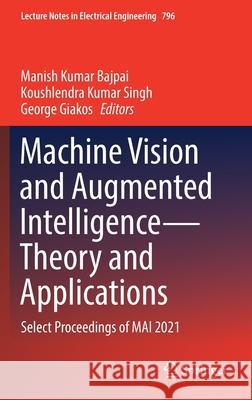Machine Vision and Augmented Intelligence--Theory and Applications: Select Proceedings of Mai 2021 » książka
topmenu
Machine Vision and Augmented Intelligence--Theory and Applications: Select Proceedings of Mai 2021
ISBN-13: 9789811650772 / Angielski / Twarda / 2021 / 830 str.
Machine Vision and Augmented Intelligence--Theory and Applications: Select Proceedings of Mai 2021
ISBN-13: 9789811650772 / Angielski / Twarda / 2021 / 830 str.
cena 885,61
(netto: 843,44 VAT: 5%)
Najniższa cena z 30 dni: 848,19
(netto: 843,44 VAT: 5%)
Najniższa cena z 30 dni: 848,19
Termin realizacji zamówienia:
ok. 22 dni roboczych.
ok. 22 dni roboczych.
Darmowa dostawa!
Kategorie:
Kategorie BISAC:
Wydawca:
Springer
Seria wydawnicza:
Język:
Angielski
ISBN-13:
9789811650772
Rok wydania:
2021
Wydanie:
2021
Numer serii:
000367340
Ilość stron:
830
Waga:
1.15 kg
Wymiary:
23.39 x 15.6 x 3.81
Oprawa:
Twarda
Wolumenów:
01
Dodatkowe informacje:
Wydanie ilustrowane











